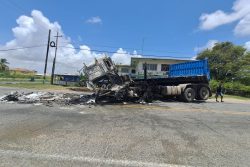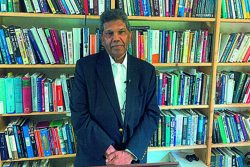The Guyana Water Inc (GWI) is currently testing modernised ultrasonic meters by means of a three- month pilot project, as it seeks to make estimated bills and misinterpreted meter readings a thing of the past.
During a recent meeting with representatives from Diehl Metering, the official manufacturers of the ultrasonic meters, an update was given on the testing phase of the pilot project, according to a press release from GWI. GWI’s Head of Field Services, Sunildatt Barran informed the meeting that the project was successful to date, and that 120 meters had been installed in Better Hope, La Bonne Intention and Beterverwagting on the East Coast of Demerara.
“Everything has been successful to date. We’ve done both the drive-by and the fixed-wireless methods of reading, so information is continuously coming in and we’re going to use that data to do our analysis,” Barran was quoted, as informing the gathering.
He also indicated that the fixed-wireless method had proven more effective since it can read a wide range of meters at once.
GWI Managing Director, Dr Richard Van West-Charles was impressed with the ultrasonic meter when he noticed it at the 2016 Caribbean Water and Wastewater Association Conference in Trinidad and Tobago, and approached the Diehl Metering representative about doing a pilot in Guyana, the GWI release stated. The advantages of the ultrasonic meters, according to Diehl Metering, include large measuring range, measurement of water flow rather than air or any other mineral, it is equipped with an alarm system to detect vandalism, causes no sedimentation and detects leaks.
“So the pilot has started…this means a lot for the financial viability of the company. The evidence is there that we have to meter about 100,000 of our customers, minimum,“ Dr Van West-Charles was quoted as saying in the release.
According to the GWI statement, the venture will allow GWI to tackle non-revenue water, that is, water that has been produced but for which the utility receives no revenue, including water consumed by the customer but not billed for, leaks or unauthorized consumption.
Dr Van West-Charles noted that a comparative analysis of customers’ historical data and that of the ultrasonic meter, as well as of the length of time it takes to read, will show the benefits of the new meter, the press release said. He added that it is also expected to support the new billing system GWI will be implementing, thus allowing efficiency in the meter reading process.
According to the GWI release, the testing phase is expected to last until December 2017, after which GWI and its Board of Directors will explore the feasibility of installing the ultrasonic meters among unmetered customers and those whose meters need replacing.









